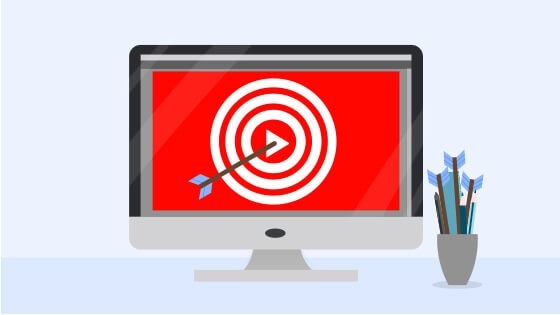7 Ecommerce Lead Generation Tactics for 2024
I hope you enjoy this blog post. If you want Hello Bar to grow your leads, click here.
Author:
Michael Wicker
Published
June 11, 2024
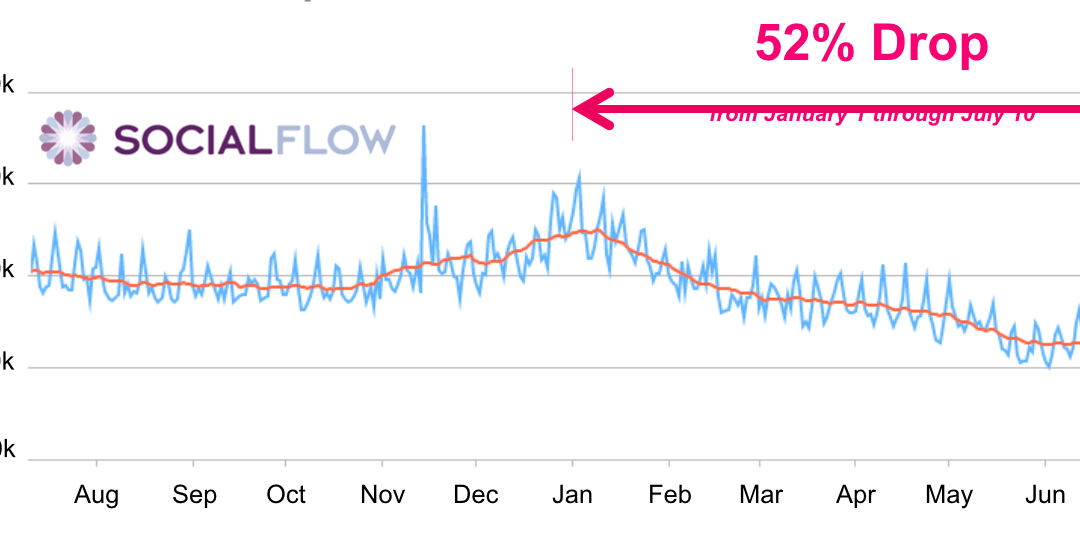
With ecommerce accounting for over 20% of global retail sales, its potential as a sales channel can’t be denied.
However, the competition is extremely high as more and more ecommerce brands popping up in every possible niche.
That’s where the need for great ecommerce lead-generation strategies comes in. Through targeted strategies, you can make your brand stand out in the crowd and generate tons of relevant leads for your business.
Want to learn how that works?
Read this detailed guide to ecommerce lead generation to learn all you need to know. Let’s start with the basics.
What is Ecommerce Lead Generation?
Lead generation is the process of attracting the interest of potential customers and capturing their information for marketing purposes. Ecommerce lead generation involves attracting and capturing leads for any business that sells products or services online.
A lead could be someone who:
- Subscribes to your newsletter
- Enroll in an online course or webinar
- Provides their contact information to access an offer or resource
- Have created an account on your website for a free product trial
To put it simply—a lead is anyone who shows interest in your business and provides their personal information. The moment they divulge their information, a lead is considered “captured.”
After that, marketers nurture the leads and persuade them to become customers.
7 Ecommerce Lead Generation Tactics That Actually Work
Here are some strategies for ecommerce lead generation that will get you great results.
1. Run Targeted Social Media Ads
This is one of the ecommerce lead-generation strategies that deliver quick results.
Let’s face it: with millions or even billions of active users, social media platforms are perfect for reaching a large audience. To put things into perspective, here is a visual showing the top social media platforms by the number of users.
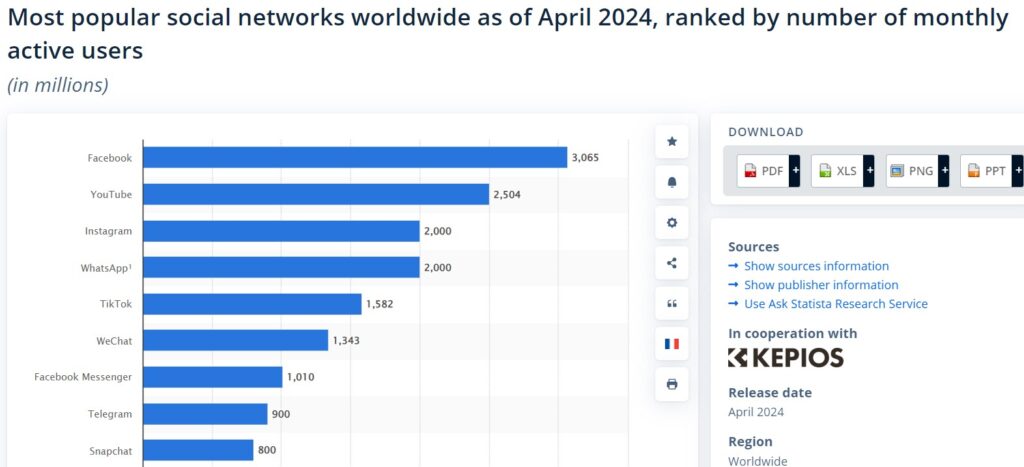
Image via Statista
Facebook, YouTube, and Instagram are not just the largest platforms, but also the best for ecommerce lead generation.
Why?
According to a PYMNTS report, 43% of consumers browse social media platforms to discover new brands or products. The most popular products people buy via social media are apparel, beauty products, and food & beverage products.
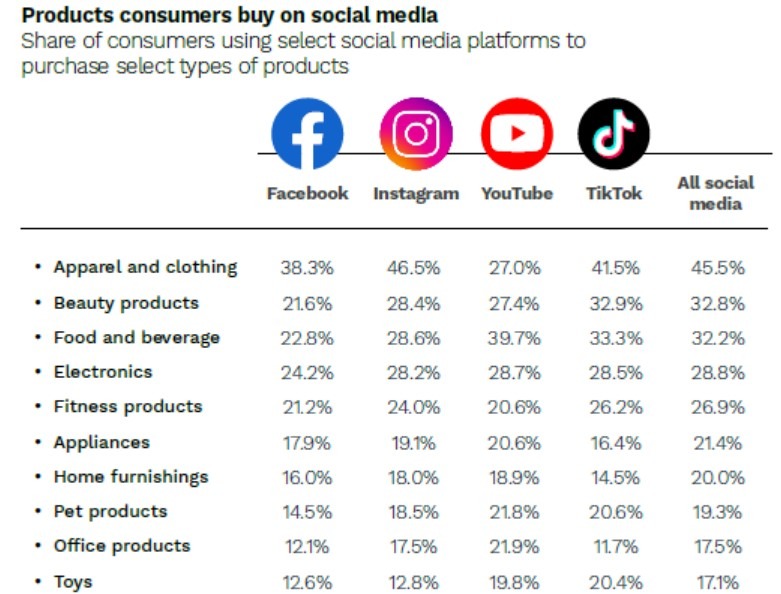
Image via PYMNTS
As you can see from the image above, Facebook and Instagram are the top platforms for social commerce.
Given that there are millions of consumers actively seeking products on social media, running ads on these platforms should be your top ecommerce lead-generation strategy.
So, how should you use social media ads for lead generation?
Here are a few tips to get you started.
- Use advanced targeting to reach relevant audiences on social media. Some options include behavioral targeting, lookalike audiences, retargeting, or demographic targeting.
- Create ads with stunning visuals that immediately grab attention and engage your audience. Make sure your ads look like native content on a platform to get more engagement.
- Write persuasive copy that focuses on providing value and lists the benefits of clicking on the call to action.
- You can also use quizzes, polls, or other interactive content to engage your ad viewers and direct them to your website.
- Craft CTAs that use strong action words and clearly direct people toward the desired action.
- Create dedicated landing pages for your social media ads, where users who click on an ad will be directed. Use compelling content and CTAs to capture leads from those landing pages.
Check out this Instagram ad by this wellness app company. It engages users with a quiz.
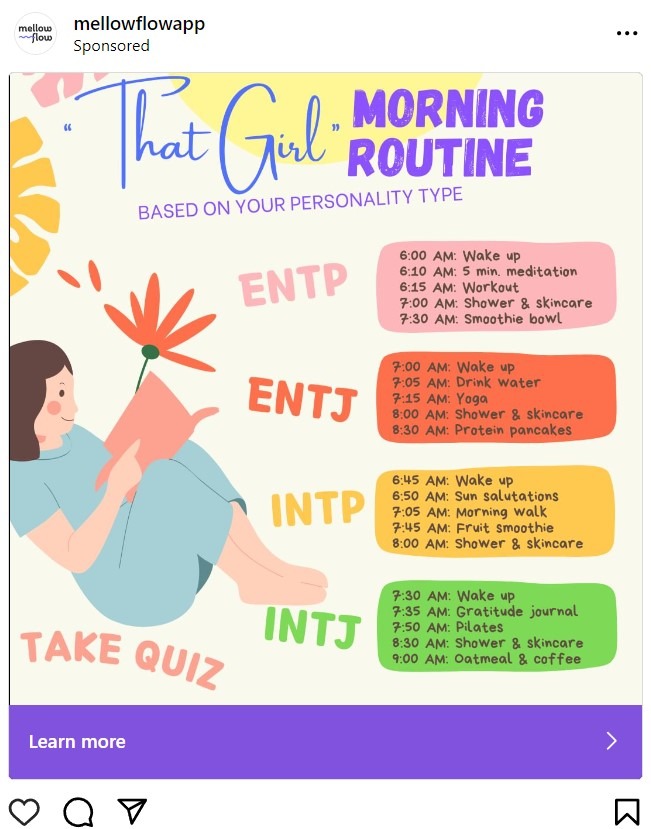
Image via Instagram
The “Learn more” CTA takes people to its website, where they take the quiz and provide their email address to get the results. Check out the landing page.
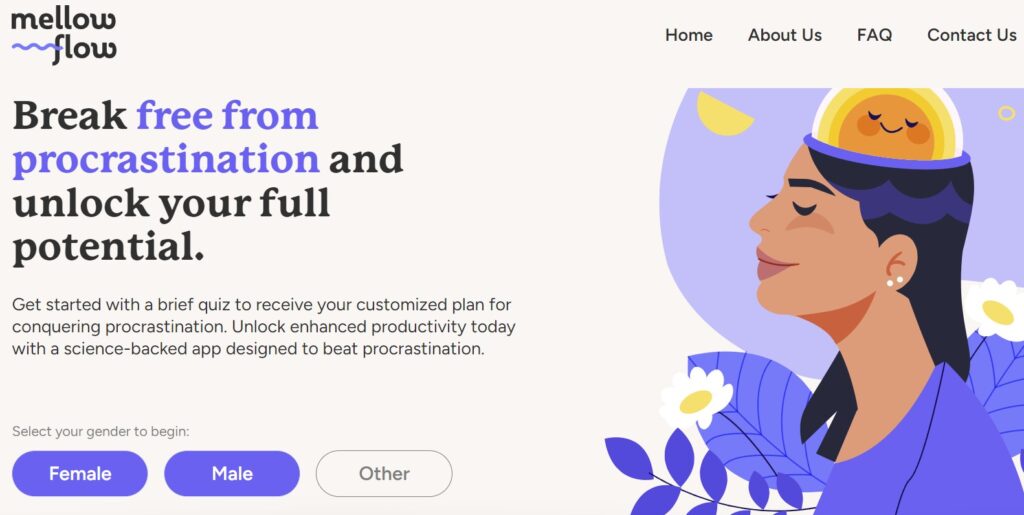
Image via MellowFlow
2. Attract Leads Through Useful Blog Content
Running a blog is one of the most sustainable ecommerce lead-generation strategies. Through relevant, useful, and targeted content, you can organically attract a steady stream of leads to your website.
Using SEO for lead generation further streamlines the process.
This is how you can generate leads through your blog:
- You create informative content on topics within your niche that help solve a consumer problem or meet a need.
- People search for queries on search engines and find your content in the search results.
- They read your content and engage with other content or resources on your website.
- Through signup forms on your website, you capture these leads for further nurturing.
Simple enough, right?
Well, not so much. The process is straightforward but the work that goes into creating high-quality content that converts is significant enough.
Let’s start with the type of content you should create for ecommerce lead generation. Here are our top recommendations.
Reviews
Detailed reviews of products, services, companies, or tools attract a lot of organic traffic. People like to read reviews before they buy and they don’t limit themselves to just customer reviews.
Let’s say a consumer is interested in buying a product and is considering several options. They’ll likely search for reviews for each option.
By writing comprehensive reviews, you can attract these high-intent leads to your website. Then, you can either turn them into customers using internal links or capture their contact information via forms.
Listicles
Consider this:
A person wants to buy a phone and doesn’t have any preferences, just a need. They search Google for the best phones within their budget and find a few product listicles with the top options. They read these listicles and shortlist a few options.
If you sell phones, you can write such listicles to attract these relevant leads to your website. The same lead-generation strategy can be applied to any other product or service.
Comparison Posts
Comparing products or services within your niche is another great way to attract organic traffic to your website.
Comparison posts help people choose the right option and if you play your cards right, you can turn them into customers by adding relevant links in your articles.
Buyer Guides
These are comprehensive guides on how to choose the best product or service. The intent of these types of content is to educate consumers and help them make the right choice.
By writing shopping guides, you can nudge consumers toward your products or services.
Casper, a mattress and bedding brand, wrote this detailed guide on “How to buy a mattress” to attract relevant leads to its website.
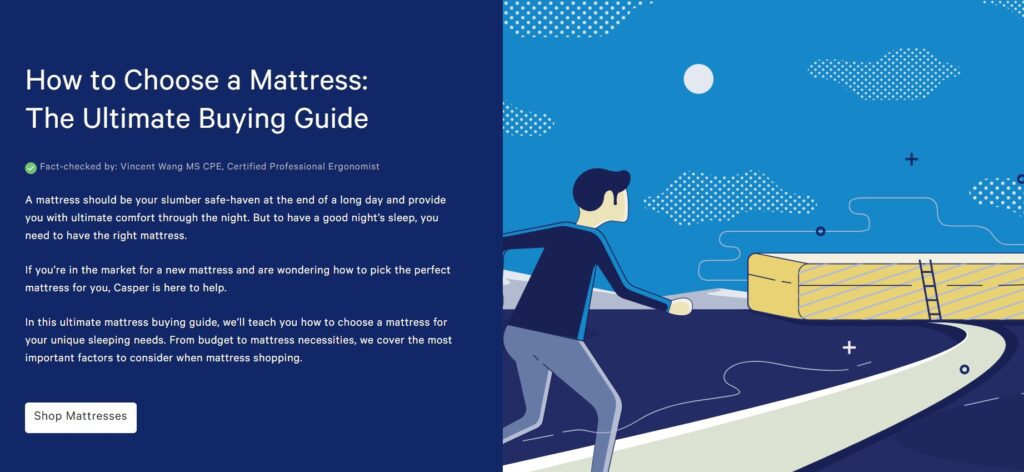
Image via Casper
It not only educates and helps consumers, but also nudges them toward the brand’s products through the “Shop Mattresses” CTA.
Throughout the guide, the brand uses internal links to direct readers to relevant product pages. Lastly, it has a section where the brand promotes its mattresses and encourages consumers to choose those over others.
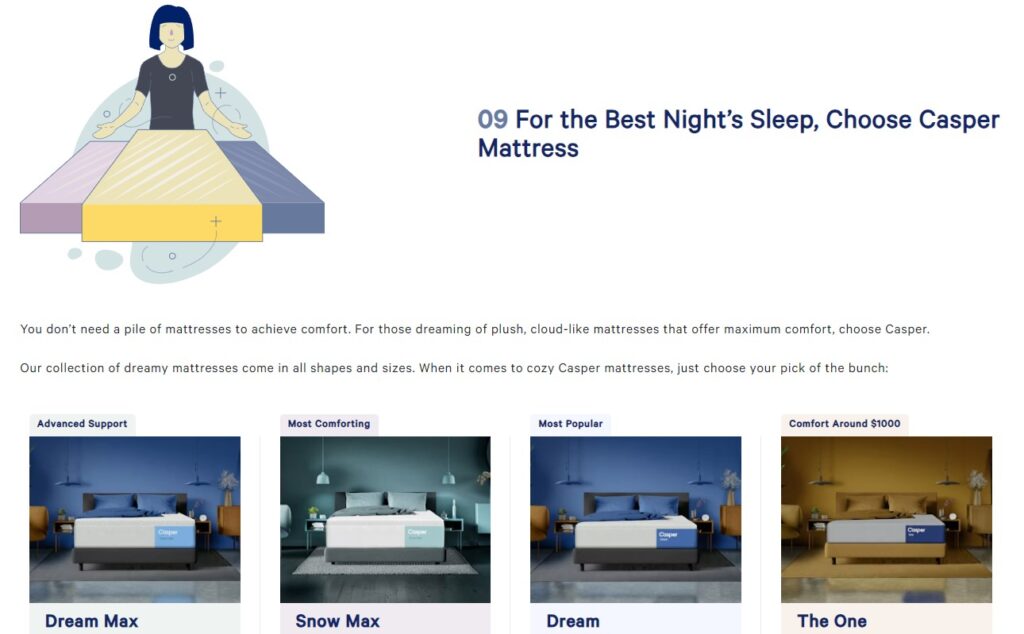
Image via Casper
This is an excellent way to drive potential leads and customers to your product or service pages. Through a single piece of content, you can promote an entire category of products and generate more leads, if not win customers immediately.
3. Keep People On-Site with Targeted Popups
There’s a reason you see popups on almost every single marketing site.
They work, plain and simple, whether we like it or not.
All digital marketers try to follow Seth Godin’s Permission Marketing. However, even he said that the first step often has to start with interruption.
There are two keys to making these less terrible for consumers.
The first is to customize how or why these are triggered. For example, you can turn popups off after the initial visit. Or, you can make it time-based so only people who spend five full minutes browsing your site will see an offer.
That’s the entire premise of exit intent: it only fires when your mouse moves outside of the window like you’re about to close it.
Designing exit-intent popups is easy with Hello Bar. Here’s a simple template you can use.
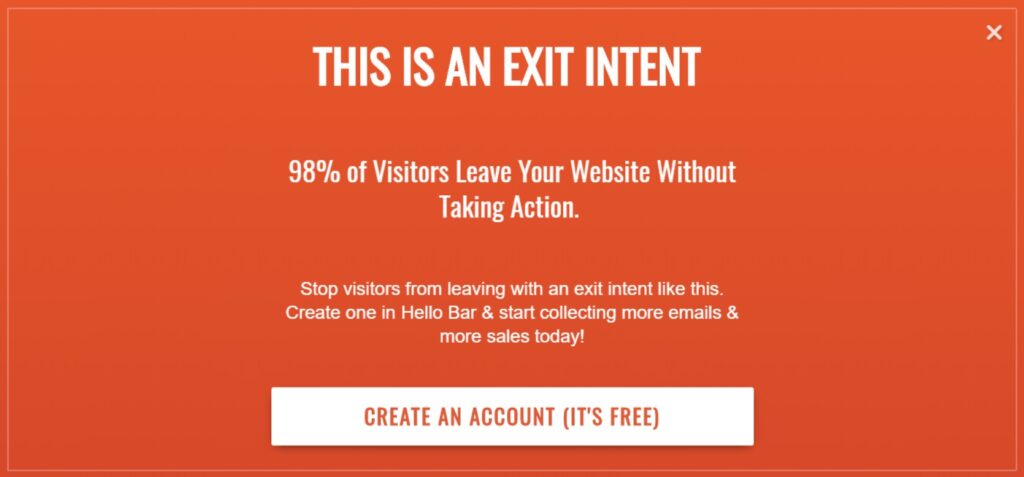
Image via Hello Bar
The second key for making these work is the offer itself.
The usual approach for ecommerce companies is a standard discount. Helix Sleep offers lucrative discounts and deals for various occasions and holidays. Here’s an example of its ongoing Memorial Day offer.
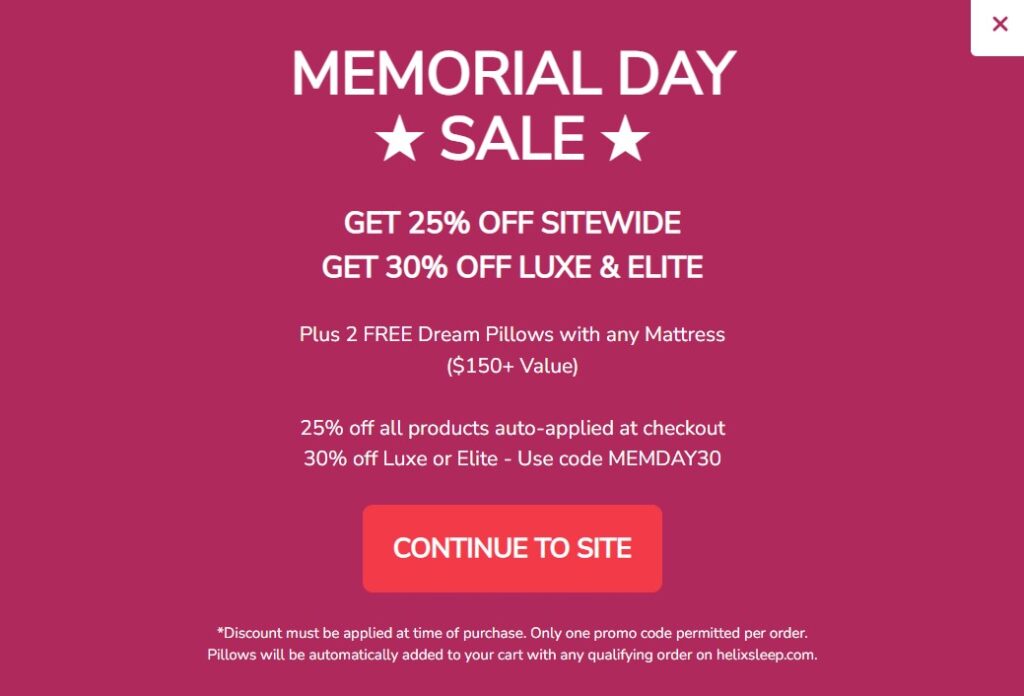
Image via Helix Sleep
You can make these perform even better (and seem less annoying) by tailoring the content in each to what the visitor is trying to see. For example, you can create separate popups for each product category.
Here are some popular types of exit-intent popups that work great for ecommerce companies:
- Cart abandonment popups: These trigger when a prospective customer is about to abandon their cart and encourage them to complete their order by offering a discount.
- Social proof popups: These popups display positive customer testimonials to convince potential customers of your product’s value.
- Flash sale popups: You can use these to provide time-limited offers to prospects, which create a sense of urgency and boost conversions.
All of these will help you keep your site visitors on your site and drive more conversions. Hello Bar can help you design all types of popups, be it for lead generation or sales conversions.
4. Let People Try Your Products Before Buying
Free samples might be the oldest promotional trick in the book.
Every vendor at every farmer’s market is trying to hand out free samples.
However, giving out a freebie here and there won’t make much difference. You need to take this seriously and do it at scale, like many brands are doing these days.
For example, Smith & Noble offers free in-home consultation for their design services and uses an online form to collect leads.
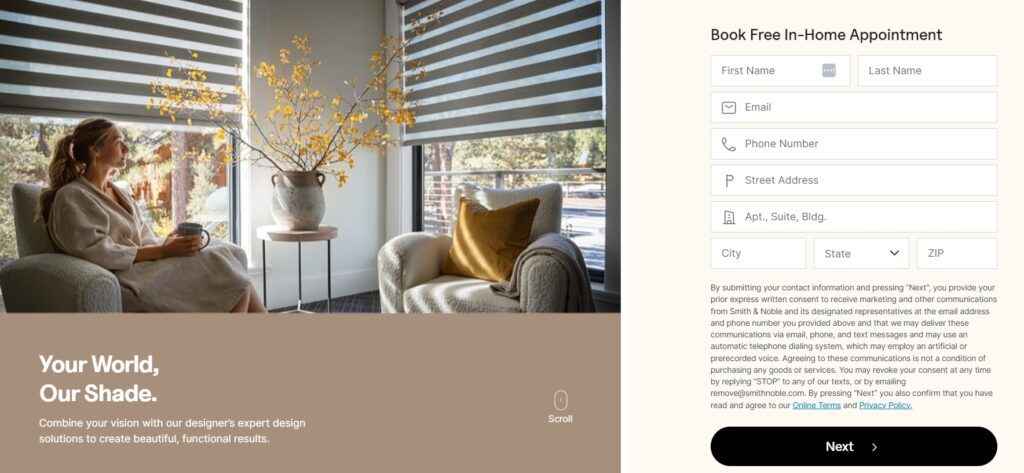
Image via Smith & Noble
That’s impressive, but nothing compared to these next few examples.
Warby Parker is a custom eyeglass company. Understandably, one of their bottlenecks is the friction in getting someone to buy something for their face without actually knowing what they’ll look like in them.
So how do you get someone to purchase glasses without trying them on?
Answer: you don’t. Instead, you let them order a few samples and give them a couple days to get comfortable enough with one to buy.

Image via Warby Parker
If the customer keeps all five over five days, they get billed. So there’s little risk beyond a few damaged, returned items.
Why is this a great strategy?
If they keep the samples, they become customers and if they don’t, you still have qualified leads for your business. Note how they start the process with a quiz, which helps them collect each customer’s information for further lead nurturing, in case they return the samples.
Helix is another that takes the same approach, but this time they lengthen the time to 100 days!

Image via Helix Sleep
After the first 30 days, customers get the option to try the product out — literally sleeping on the mattress — for nearly a third of a year.
The reason for that initial month is because of how mattresses take a few weeks to ‘break in.’ So they’re also helping set expectations. Customers know the mattress might not feel perfect initially, but should in the near future.
Otherwise, they’ll get their money back. Again, if people keep the product, they become customers, but even if they don’t, the brand still gets tons of leads through this strategy.
This is one of the ecommerce lead-generation strategies that work for all types of brands. For example, if you sell SaaS subscriptions, you can offer a free trial. Or, if you offer services, not products, you can give free consultations.
The idea is to attract leads by offering something for free and turn them into customers by satisfying them with your products or services.
5. Use Quizzes to Provide Personalized Product Recommendations
Almost two decades ago, researchers used the jam study to see what happens to sales when customers are given more options to purchase.
Initially, presenting customers with more options (in terms of products, variety, etc.) drove more people to the booth than when they had less varieties on display.
The purchases, however, were a completely different story.
Despite there being more varieties to choose from, and despite more varieties bringing more people over to the booth, this didn’t translate into more sales.
In fact, presenting the customer with less options at the outset ended up driving more ecommerce conversions.
That’s the trouble ecommerce companies face. More SKUs might increase long-term revenue, however, in the short term, it can overwhelm users and slow down sales.
That’s why many ecommerce companies are starting to use quizzes as an interactive way to make tailored, customized recommendations.
According to Opinion Stage, quizzes can boost lead generation and conversion rates by as much as 500%. Clearly, they work. Let’s look at some examples to understand how quizzes help with ecommerce lead generation.
Birchbox, a beauty and skincare subscription service, uses a quiz to understand each user’s needs and preferences. It then recommends the best products for them, based on the answers provided in the quiz.
By starting the process with a quiz, which requires users’ email information at the end, the brand is able to collect valuable leads. Even if people who took the quiz, didn’t end up buying, they are still relevant leads that can be nurtured.
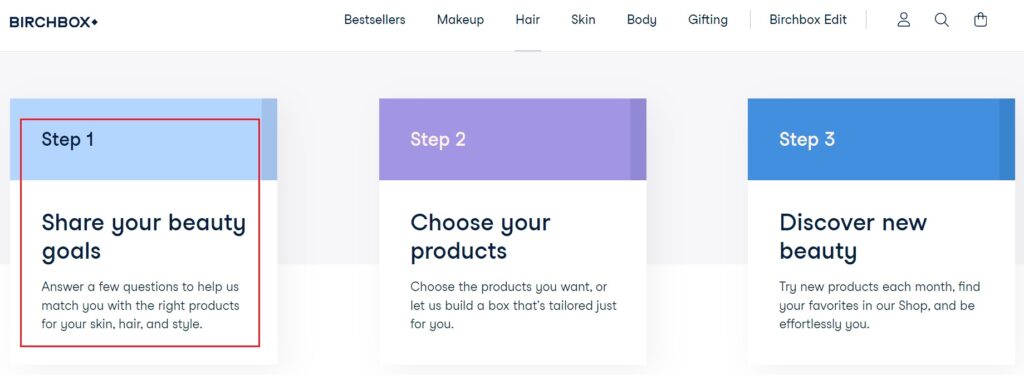
Image via Birchbox
The questions are designed to qualify or disqualify different product attributes so it’s easy to provide specific recommendations at the end.
Like every other personalized example here, they also convert better than generic recommendations.
Warby Parker also uses a quiz, in conjunction with the five free frame trial, to help consumers make sure they’re bound to like at least one of their options.
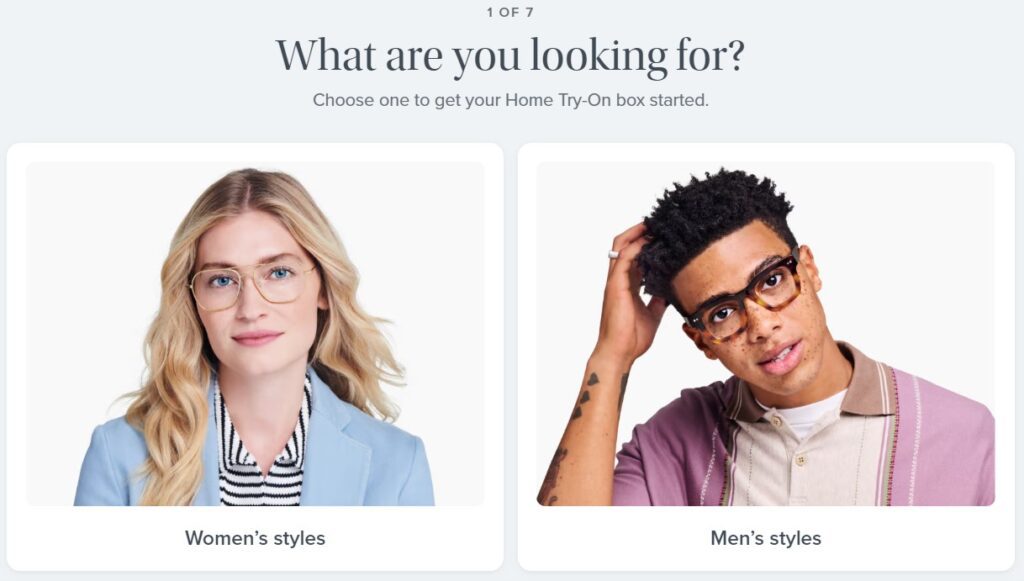
Image via Warby Parker
The questions start extremely broad, asking about gender, style, and face width, before asking more specific, finely-tuned questions at the end.
The answer for face width narrows down the frame style, before getting granular later with colors, materials, and even asking about your latest eye exam.
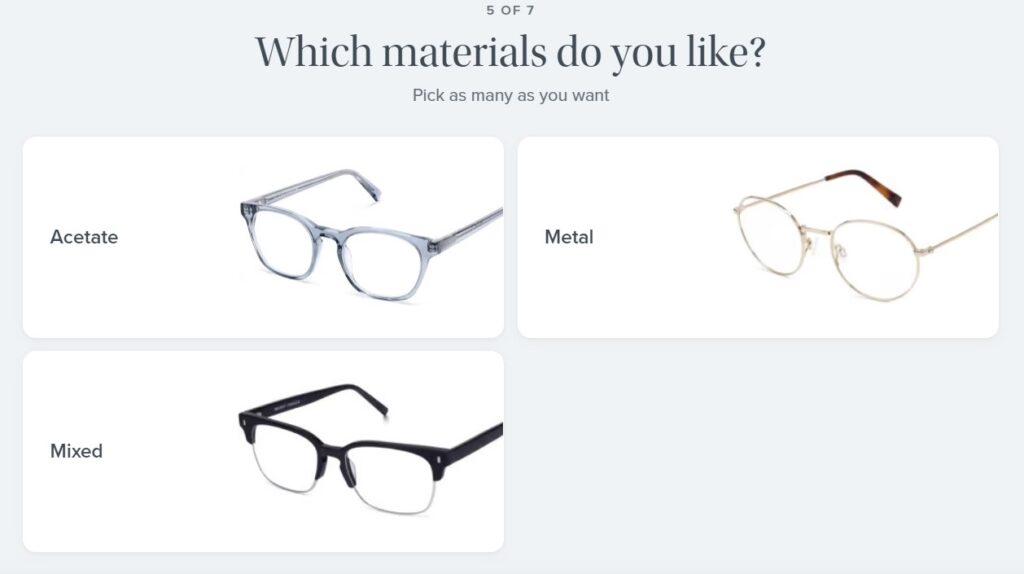
Image via Warby Parker
At the end of the eight questions, you get personalized product recommendations that fit your exact criteria. You can choose five of the recommended products to try for free.
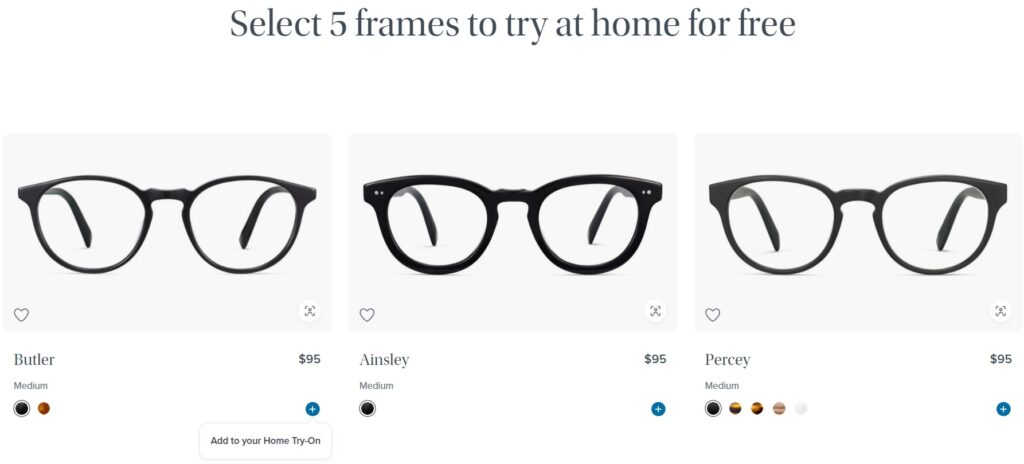
Image via Warby Parker
It’s almost like having a personal shopper do all the work for you, and pick out something that you’re more likely to want from the get-go.
This last point is especially important.
Enabling customers to pick products that are a better match should mean you can reduce the number of support requests or returns down the line.
According to a Freshworks report, 43% of retail consumers expect prompt service and response to support requests. Here are the consequences of poor customer service:
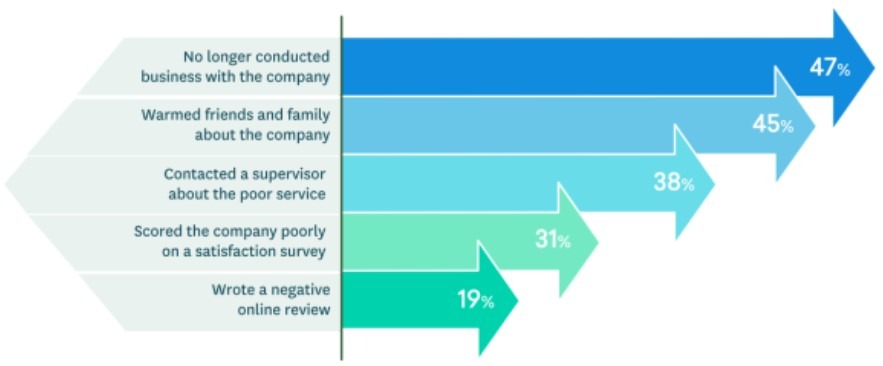
Image via Freshworks
Instead of putting this kind of burden on your support team, use quizzes to recommend the perfect products to consumers and generate leads in the process.
6. Leverage the Power of Referral Marketing
People trust their friends and family members, or even influencers, more than they trust brand promotions.
According to a 2022 survey, 40% consumers said that they trust referrals more than any other form of marketing. While 96% of marketers consider it as an important channel, only 4% prioritize it over other forms of marketing.
Don’t make the same mistake as others.
Referral marketing is extremely effective and costs a lot less than what you probably spend on other forms of marketing.
Invest in a good referral marketing software solution and launch a referral program for your ecommerce business.
Here are some reasons you should start a referral program:
- When your existing customers recommend your business to others, they provide social proof that your products or services are great and credible.
- It is a cost-effective ecommerce lead-generation strategy.
- The results are easy to track, making marketing attribution simpler.
- When your customers become brand advocates, it fosters customer loyalty and encourages repeat business.
Now that you understand the importance of referral marketing, let’s discuss some strategies to do it right.
Offer Double-Sided Rewards
Everyone knows that you should incentivize customers to get them to recommend your brand to others.
But what about the person being referred? Why would they sign up for your community, buy from you, or take the desired action?
That’s where double-sided rewards help. Offer a reward for both parties involved to make your referral program successful in helping you with ecommerce lead generation.
Here’s a simple example from ASOS where both parties get a 20% discount—a win-win.
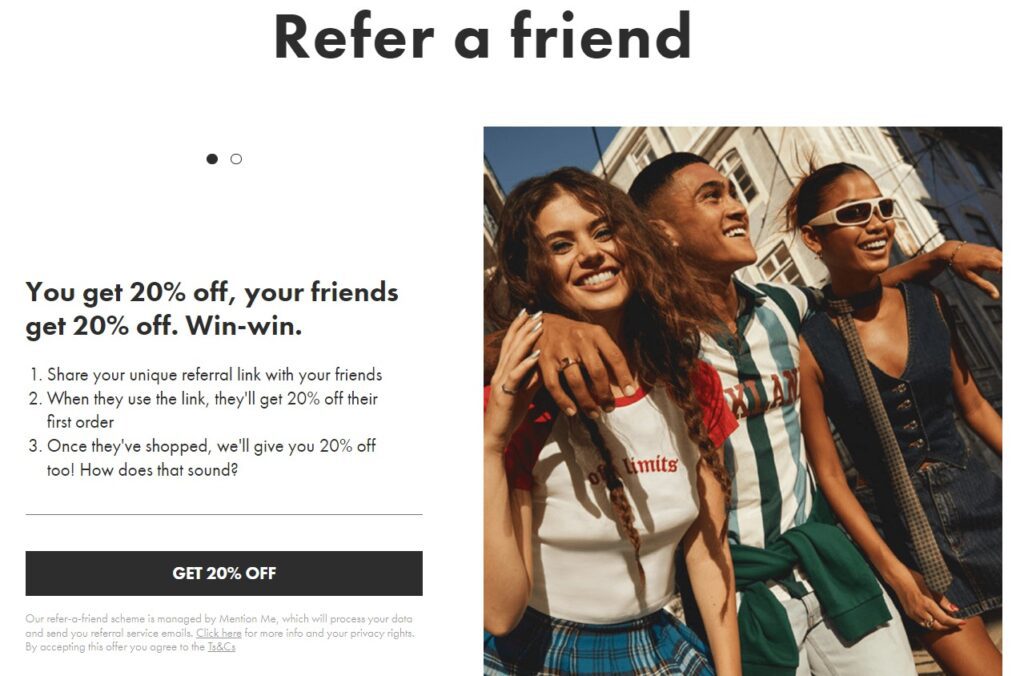
Image via ASOS
Use Gamification
Make your referral programs more engaging by adding gamification elements like points and levels. The more referrals a customer makes, the better rewards they get.
Offer Qualitative Rewards
While monetary rewards are important, offering experiential and other qualitative rewards and benefits can further incentivize customers to make referrals.
Go Ahead Tours, for instance, offers bigger and better rewards for more referrals a customer makes. This encourages each customer to try and refer the brand to as many friends as they can.
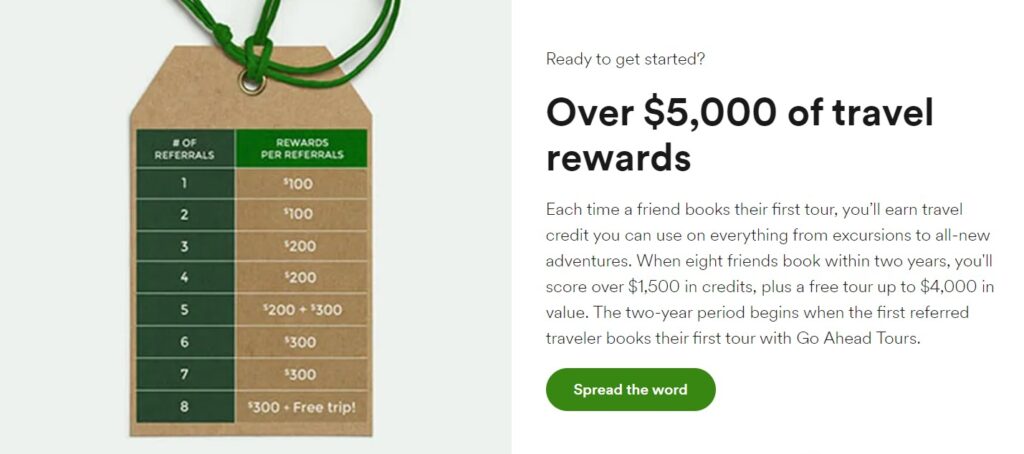
Image via Go Ahead Tours
This can be in the form of early access to sales to event invitations.
The beauty brand Goop, for example, offers more than monetary rewards—it encourages customers to be a part of a thriving community. By emphasizing the importance of being a part of the community, the brand encourages more customers to join its referral program.
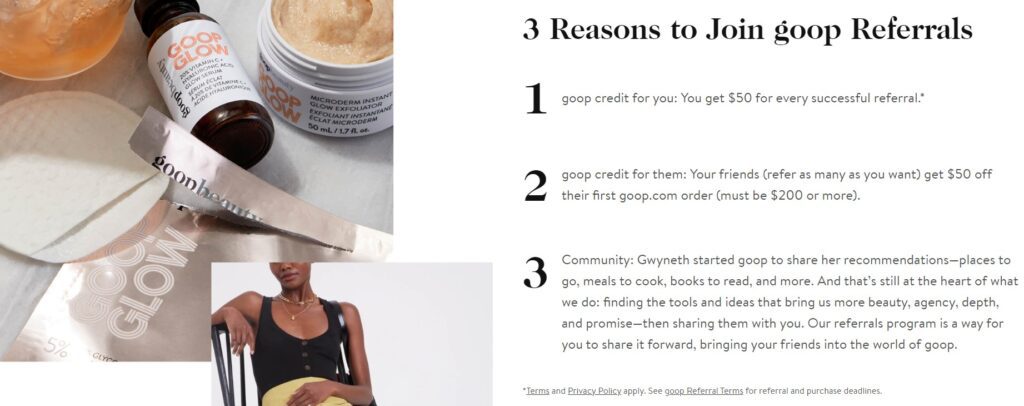
Image via Goop
7. Generate Leads via Social Media
We’ve already discussed social media advertising for ecommerce lead generation. However, you don’t necessarily need to pay to generate leads from social media and can do so for free.
Given that many people use social media specifically for shopping or shopping-related activities, it’s a prime channel for ecommerce lead generation.
Check out these interesting stats from a recent survey showing how people use social media for shopping.
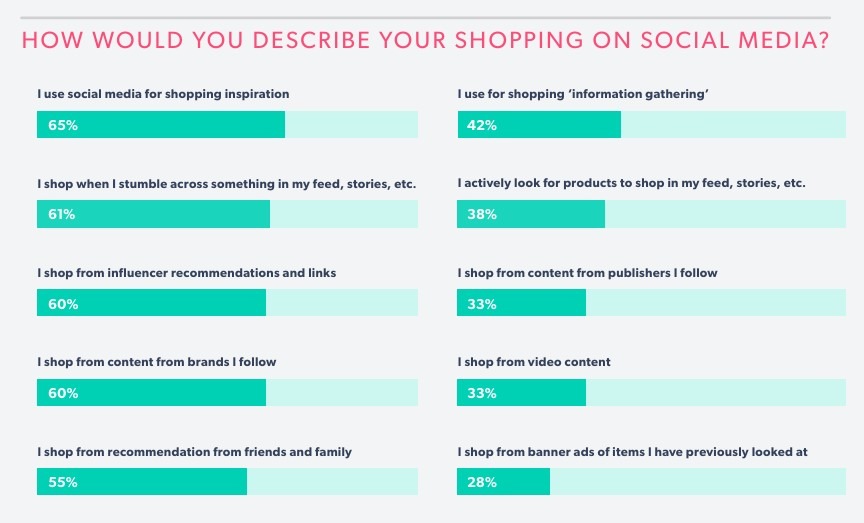
Image via Bazaarvoice
Here are some tips for ecommerce lead generation via social media to get you started.
- Start by creating an account on a few chosen social media platforms and optimizing your bios with accurate information about your business and a website link.
- Create visual content showcasing your products, such as how-to videos, stunning product pictures, and more. Always add a call to action directing your audience to click the link in your bio to take the next steps.
- Host social media contests and giveaways and direct participants to dedicated landing pages to capture leads.
- Promote your ongoing sales and offers on social media to direct traffic to your website.
- Partner with influencers and ask them to review or promote your products. Provide them with unique discount codes and tracking links to generate leads and track each influencer’s performance.
- Lastly, consistently post high-quality content that’s relevant and useful to your target audience. This will help you build a loyal following of people who are more likely to turn into leads with a little nudge.
GoPro, for instance, actively uses Instagram to share stunning photos taken by its cameras. It also promotes its new product launches on the channel and adds product purchase links in its bio.
Check out this post where it promotes its Hero 12 camera and lists all its innovative features to spark audience interest in the product.
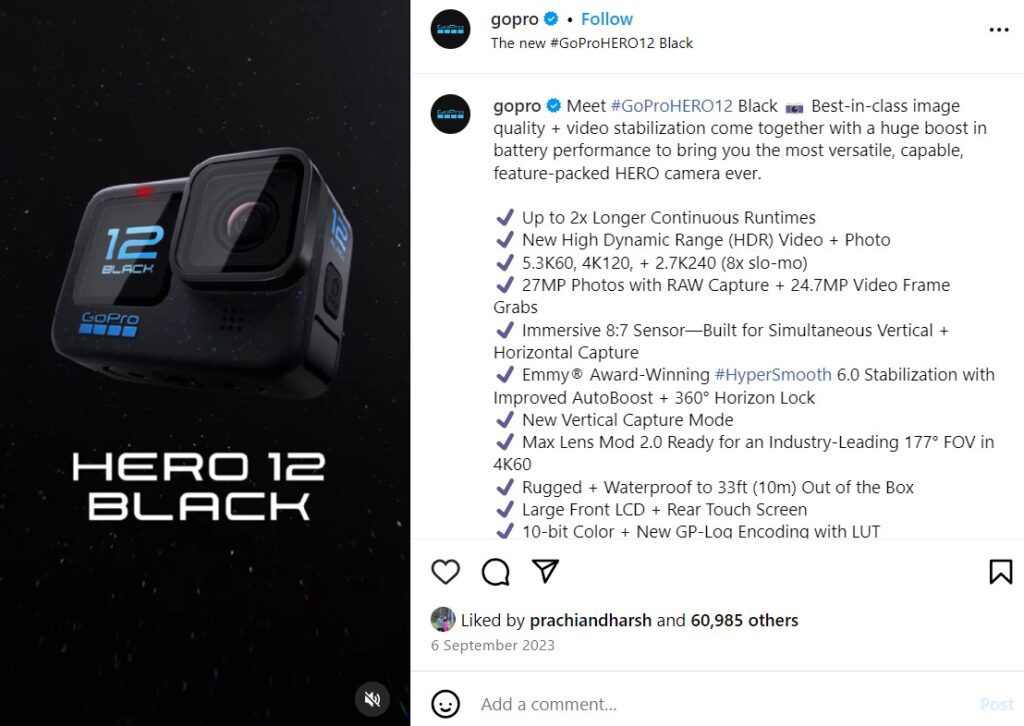
Image via Instagram
FAQ
Q1. What is an ecommerce lead?
In ecommerce, a lead is someone who has shown interest in your products or services and provided their contact information for further communications. So, when someone signs up for your newsletter or provides their email address to be informed when a product is back in stock, they become a lead.
Q2. Why is ecommerce lead generation important?
Ecommerce lead generation is the first step in the sales process. It introduces your brand to a new, but relevant, audience and sparks their interest enough for them to provide you with their contact information.
Since the ecommerce sales process is typically short, ecommerce lead-generation strategies often lead to direct sales. Either way, it’s a win for the business as they either gain new customers or prospective customers through the process.
Q3. How can I generate ecommerce leads?
There are many tactics you can use for ecommerce lead generation, but here are our top seven picks:
- Run targeted social media ads to reach a specific audience and direct them to your website or landing pages.
- Create and share relevant, useful, and optimized blog content that organically attracts leads through Google or other search engines.
- Keep people on your site longer using targeted popups to encourage your site visitors to take the desired action.
- Offer free product trials to generate leads and win new customers by reducing the hesitation to buy a product online without trying it out.
- Ask your site visitors to take a quiz to get personalized product recommendations and ask for their contact information to deliver the results.
- Start a referral program that incentivizes current customers to bring in leads for your ecommerce business.
- Leverage social media to build an audience base and direct them to your website through targeted calls to action and links.
Q4. What are the 4 Ls of lead generation?
Lead capture, landing pages, lead magnets, and lead scoring are the four Ls of lead generation.
Q5. Which is the best free ecommerce lead generation strategy?
Content marketing, whether it’s on a website, blog, or social media, is the best free ecommerce lead-generation strategy. By sharing relevant content on your website or blog, you can get organic traffic and leads to your website.
Through social media content, you can promote your brand and use links to direct traffic to your website.
If you don’t want to invest in costly ad campaigns or offer promotions and deals to win new customers, then content is your best bet. Create and share great content on multiple channels to generate more leads for your ecommerce business.
Ready to Generate More Lead for Your Ecommerce Business?
There you have it—some of the most effective tactics for ecommerce lead generation.
Use a mix of free and paid lead generation tactics to get the best return on investment. Leverage great content to attract people to your site and capture leads using engaging popups and forms.
If you need a hassle-free, no-fuss solution to create website forms and popups, then try Hello Bar. You don’t require any technical expertise and can create and launch high-converting popups in no time.


